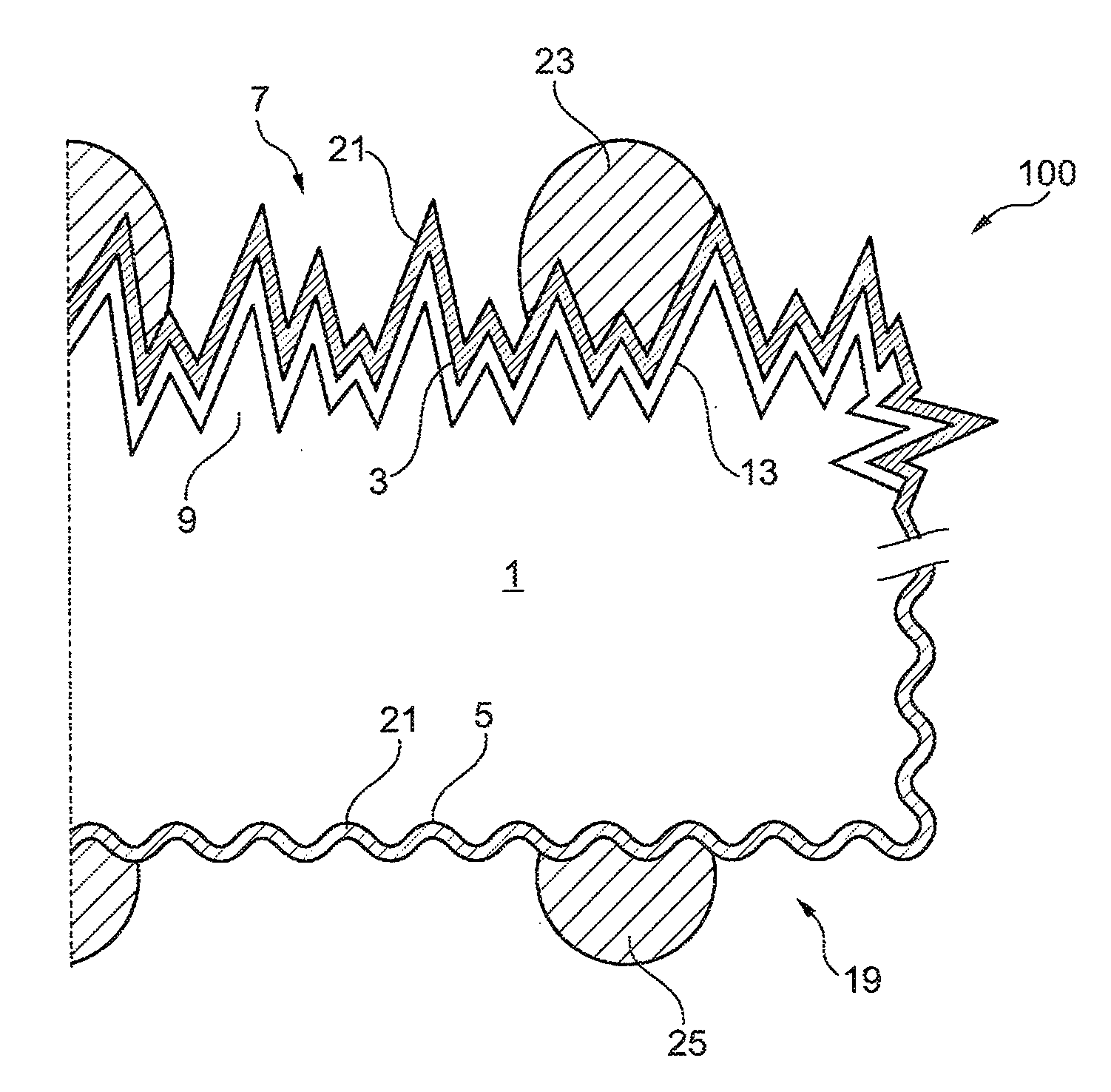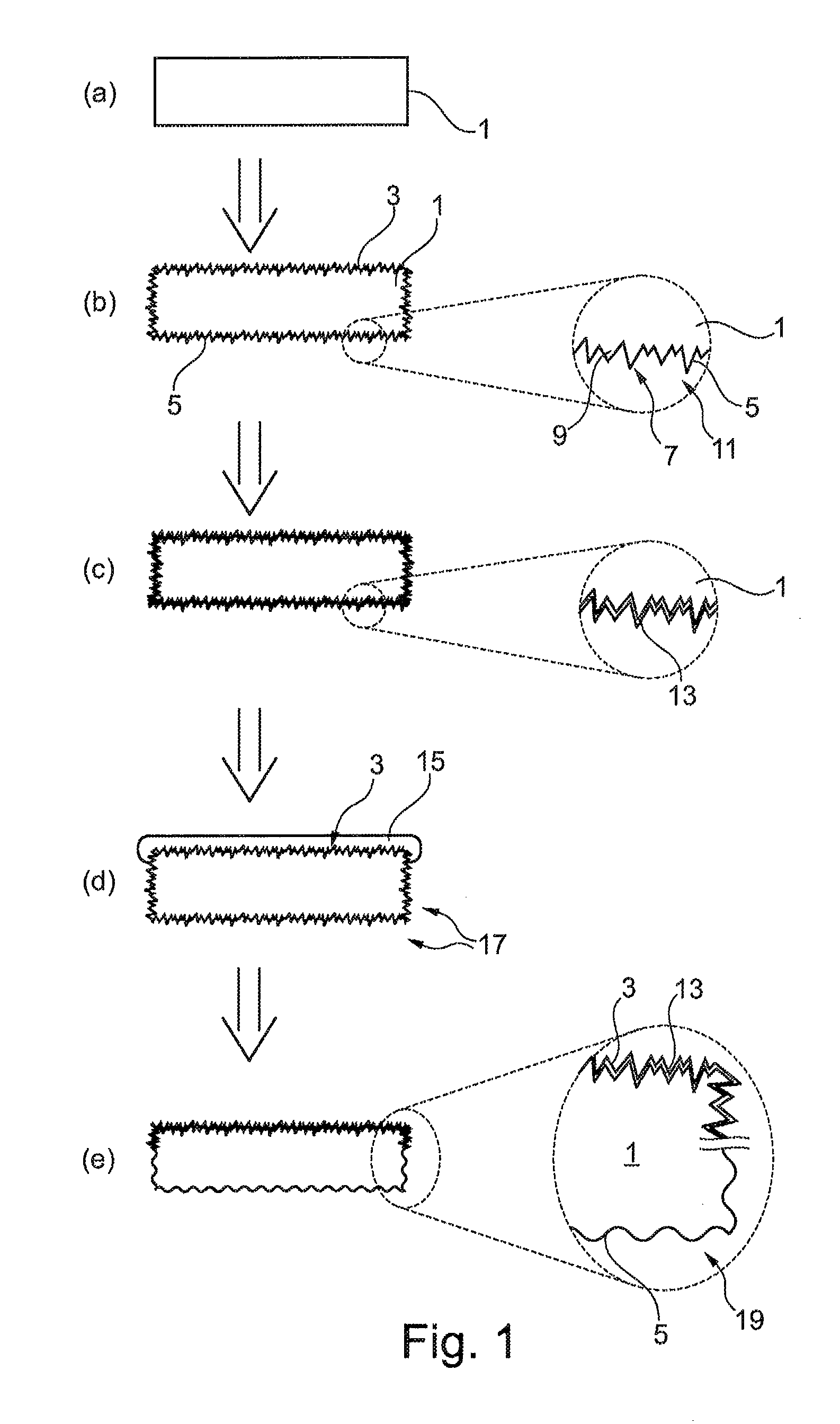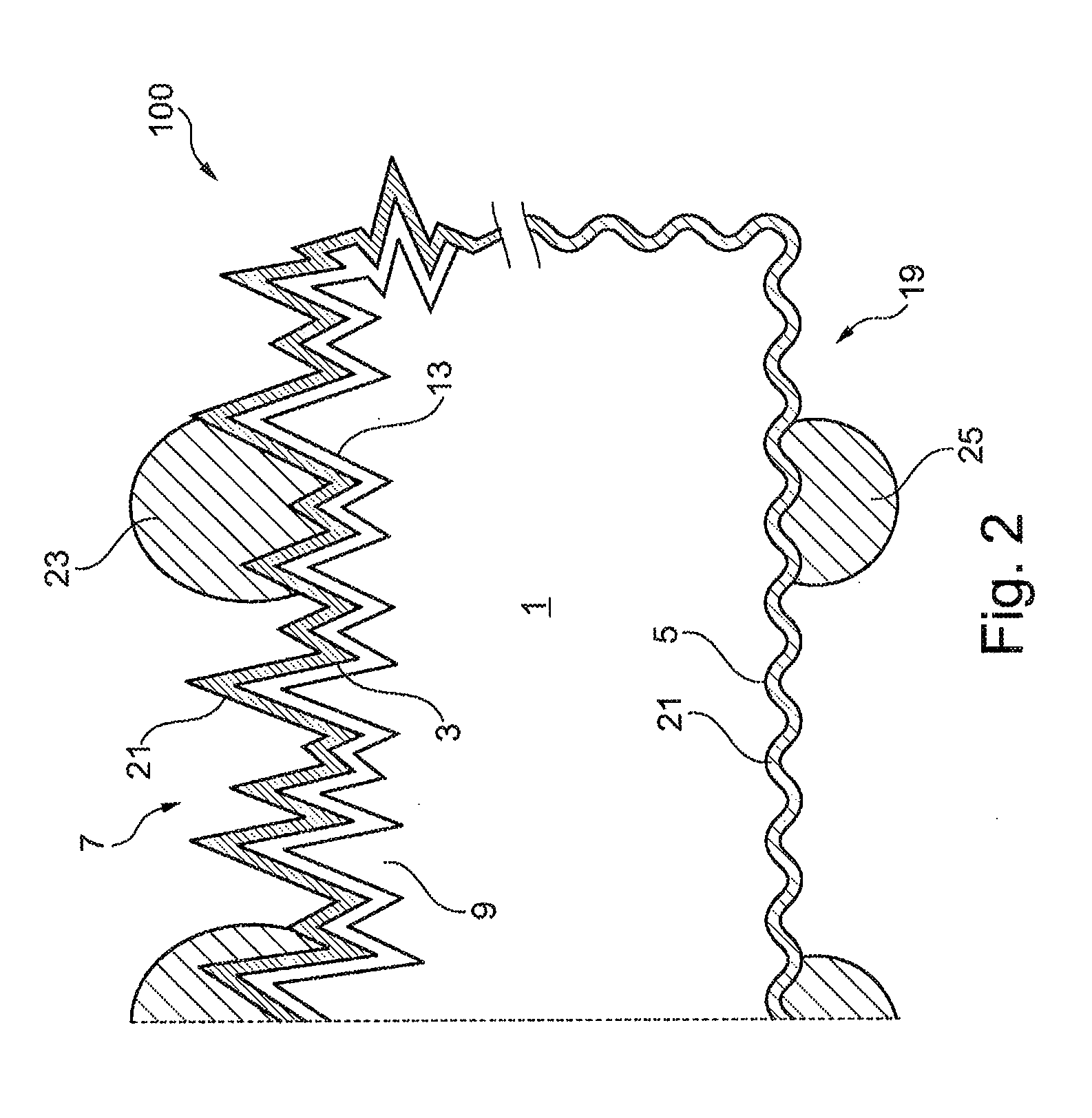Method for producing a solar cell having a textured front face and corresponding solar cell
a solar cell and front face technology, applied in the direction of electrical apparatus, semiconductor/solid-state device manufacturing, semiconductor devices, etc., can solve the problems of disadvantageous sharp edges of the pyramids on the rear face of the solar cell, and achieve the effects of reducing reflection, reducing reflection, and minimising reflection
- Summary
- Abstract
- Description
- Claims
- Application Information
AI Technical Summary
Benefits of technology
Problems solved by technology
Method used
Image
Examples
Embodiment Construction
[0035]A method for producing a solar cell according to an embodiment of the present invention is to be described with reference to FIG. 1. It is pointed out that, in the figure, in particular, some process steps that are essential for the method according to the invention are represented schematically. The entire method for producing the solar cell may comprise further process steps. Some of such further process steps are stated, by way of example, in the following description. It is pointed out, however, that the process steps that are essential to the method, stated in the claims, may also be combined with other process steps to form an entire production sequence.
[0036]Firstly, in step (a), a solar cell substrate 1 is provided. This may be, for example, a thin silicon wafer, having a thickness of less than 200 μm. The solar cell substrate may be prepared, before further processing, by cleaning steps and etching steps, by means of which, for example, sawing damage caused during saw...
PUM
 Login to View More
Login to View More Abstract
Description
Claims
Application Information
 Login to View More
Login to View More - R&D
- Intellectual Property
- Life Sciences
- Materials
- Tech Scout
- Unparalleled Data Quality
- Higher Quality Content
- 60% Fewer Hallucinations
Browse by: Latest US Patents, China's latest patents, Technical Efficacy Thesaurus, Application Domain, Technology Topic, Popular Technical Reports.
© 2025 PatSnap. All rights reserved.Legal|Privacy policy|Modern Slavery Act Transparency Statement|Sitemap|About US| Contact US: help@patsnap.com



